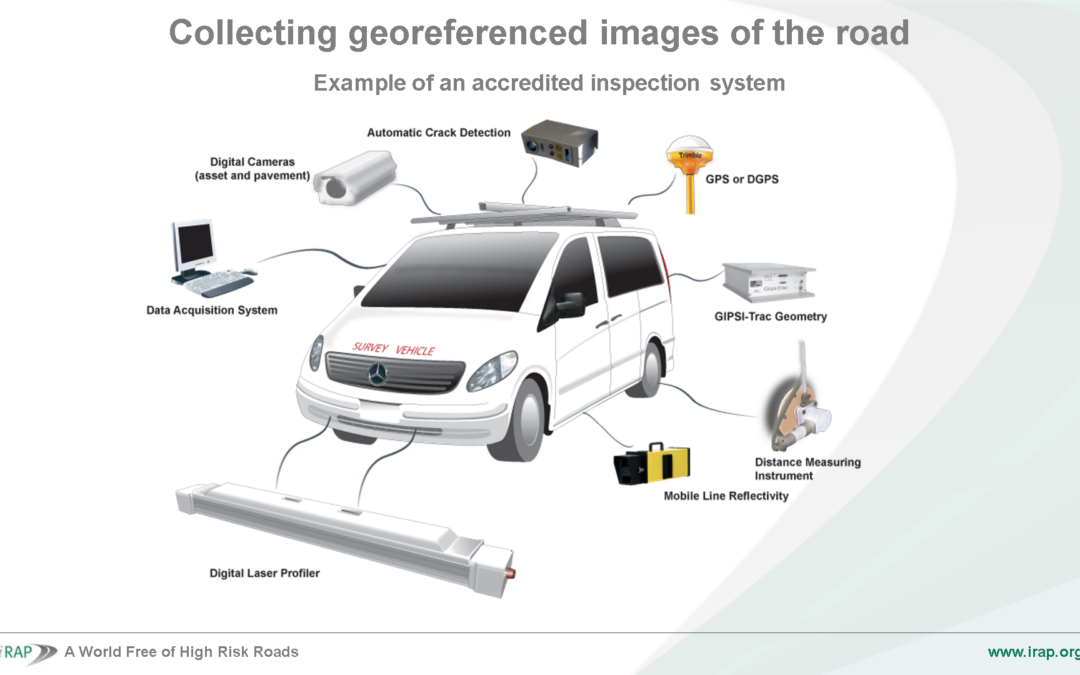March EuroRAP Lunchtime seminar was dedicated to RAP basics. Star rating was presented by Morgan Fletcher, iRAP’s Latin America and Caribbean Operations Lead, and Suzy Charman from EuroRAP’s Management Committee. The seminar attracted 38 participants from 24 countries.
Morgan Fletcher focused on what Star Rating is, how it can be done, required inputs and outputs at the end. He started his presentation by reminding all participants of the high numbers of victims every year on the world roads: 1,350,000. Besides, road traffic injuries are number one cause of death for children and young adults between the ages 5 and 29. Therefore, the United Nations included the road quality in their Road Safety Targets. Target 3 says “By 2030, all new roads achieve technical standards for all road users that take into account road safety, or meet a three star rating or better”. Target 4: “By 2030, more than 75% of travel on existing roads is on roads that meet technical standards for all road users that take into account road safety”. Star rating mentioned in the UN Road Safety Targets is the iRAP’s star rating. iRAP is a charity with a vision of a world free of high-risk roads. It is currently active in more than 100 countries, including more than 30 countries in Europe. For most of the countries in Latin America, Africa and Asia, the main focus of iRAP is Star Rating. Europe is mainly focusing on Risk Mapping, since we have pretty good crash risk data available, which is often not the case in other parts of the world.
Morgan then presented how the general process for Star Rating and safer roads investment plan goes: from data collection to online software ViDA and implementation of suggested treatments for roads. Some details about survey vehicles, coding and the attributes which influence the likelihood of death and serious injury and how Star Rating is generated for each road user group (vehicle occupants, motorcyclists, bicyclists and pedestrians), and safer roads investment plans (treatments which will make the roads safer) were also highlighted and explained with two examples of Star Rating results. Morgan concluded “research shows that a person’s risk of death or serious injury is approximately halved for each incremental improvement in star rating”.
 Suzy Charman focused her presentation on the ways in which we can use the iRAP’s data to help us in our road safety endeavour. The five different ways of using the iRAP’s data are:
Suzy Charman focused her presentation on the ways in which we can use the iRAP’s data to help us in our road safety endeavour. The five different ways of using the iRAP’s data are:
– Performance monitoring and strategic planning,
– Prioritisation,
– Mass action modelling,
– Route treatment planning and options,
– Star rating for design.
Each of these was explained into more details and with some examples from the United Kingdom. At the end some more interesting questions were answered during the Q&A session.
To see the full recording of the EuroRAP Lunchtime seminar #5, click HERE – Coming soon! (see the chapter markers for each presenter). The PPT presentations are available HERE.
This was the fifth of EuroRAP’s lunchtime seminar series which provide information about the EuroRAP protocols through the ‘RAP basics’ events, insight into iRAP research and innovation through our ‘Hot Topic’ seminars and inspiration for EuroRAP programmes through our ‘National schemes spotlight’ seminars. These three webinar types are presented in rotation giving us food for thought every month.
The virtual seminar series is aimed at all EuroRAP partners and other interested parties – from automobile clubs to road authorities, to researchers.
Our next online seminar on 3rd May 2022 at 1 pm CET will focus to Research and Innovation Hot Topic: CycleRAP. Register HERE. We look forward to seeing you there.


















